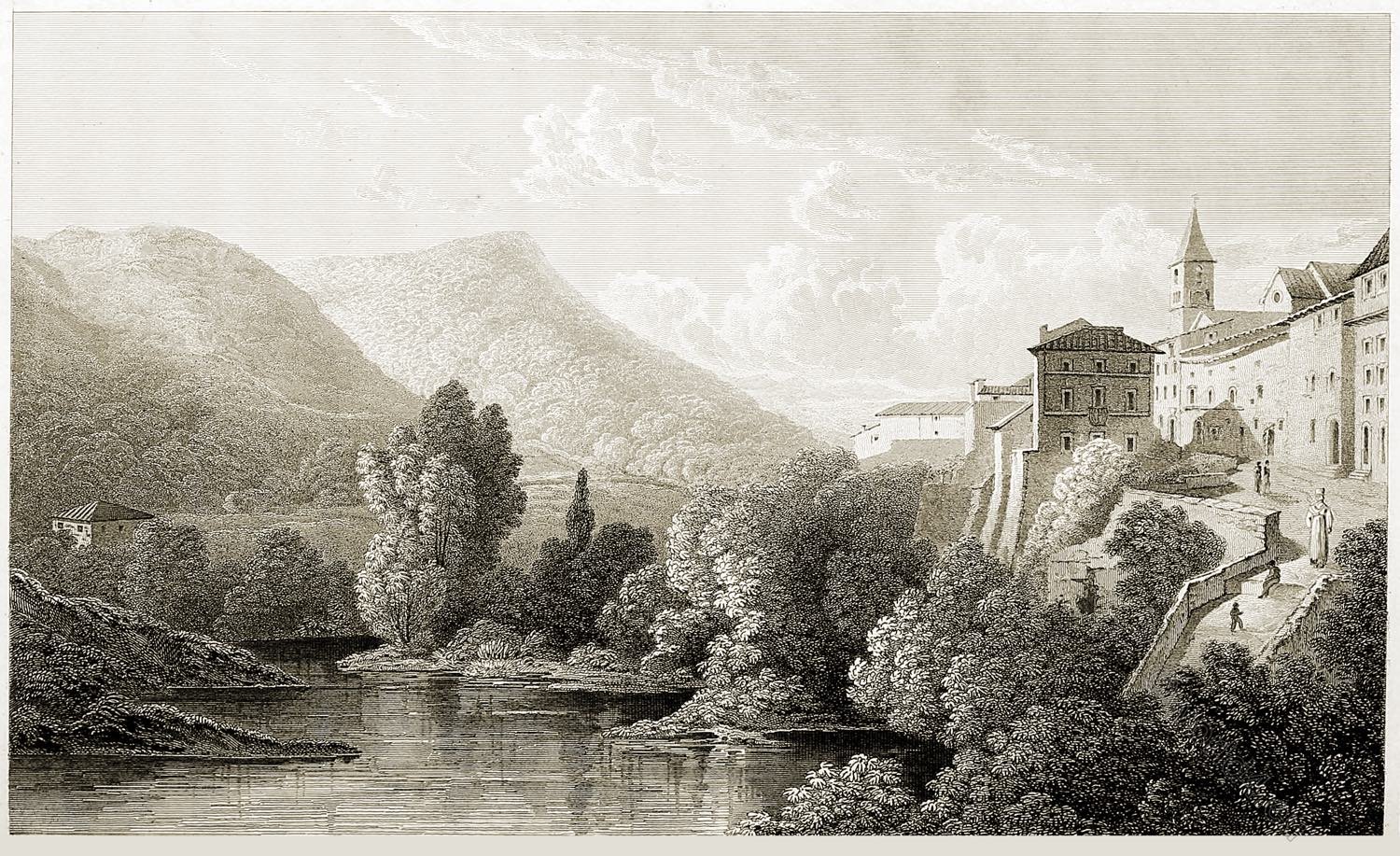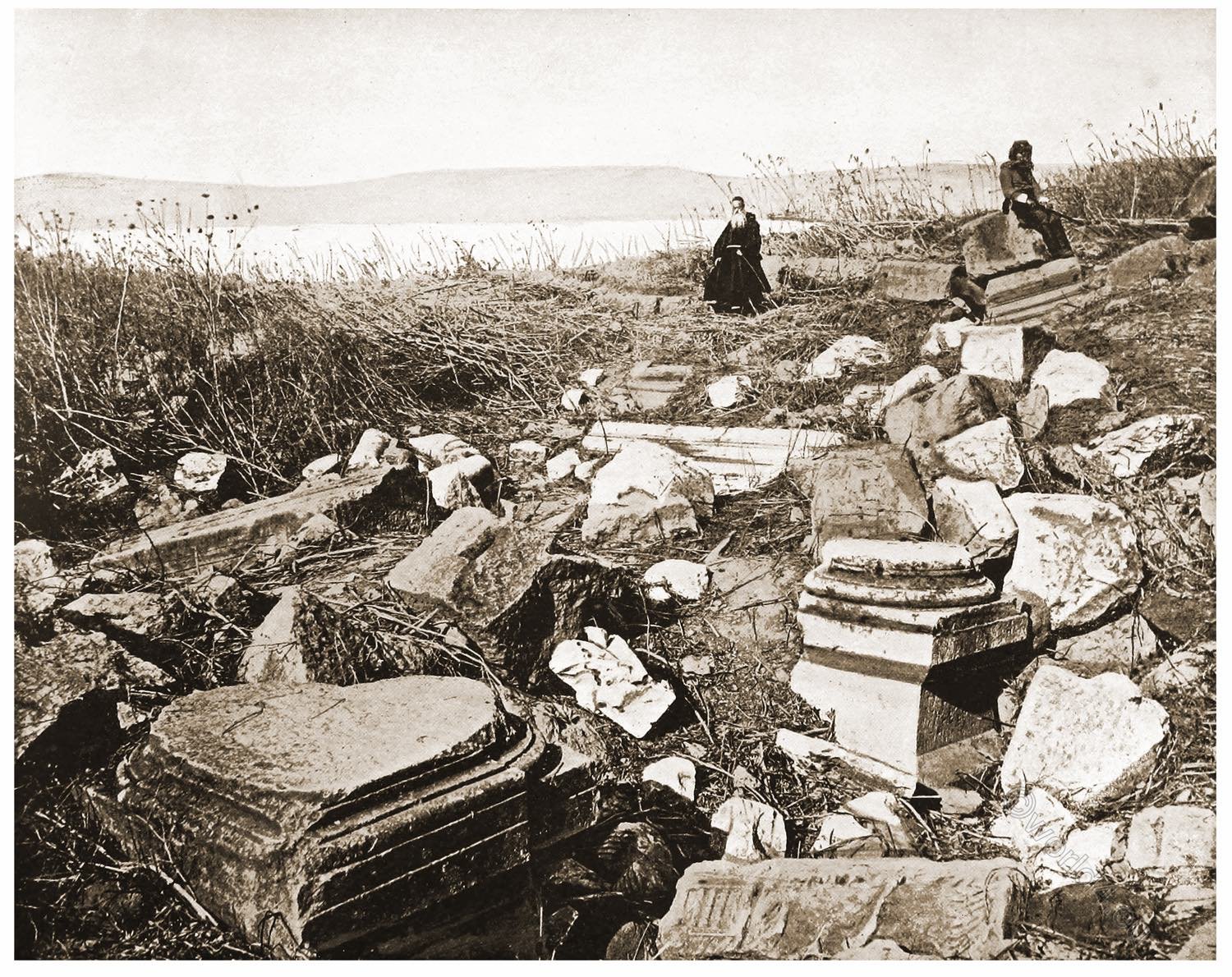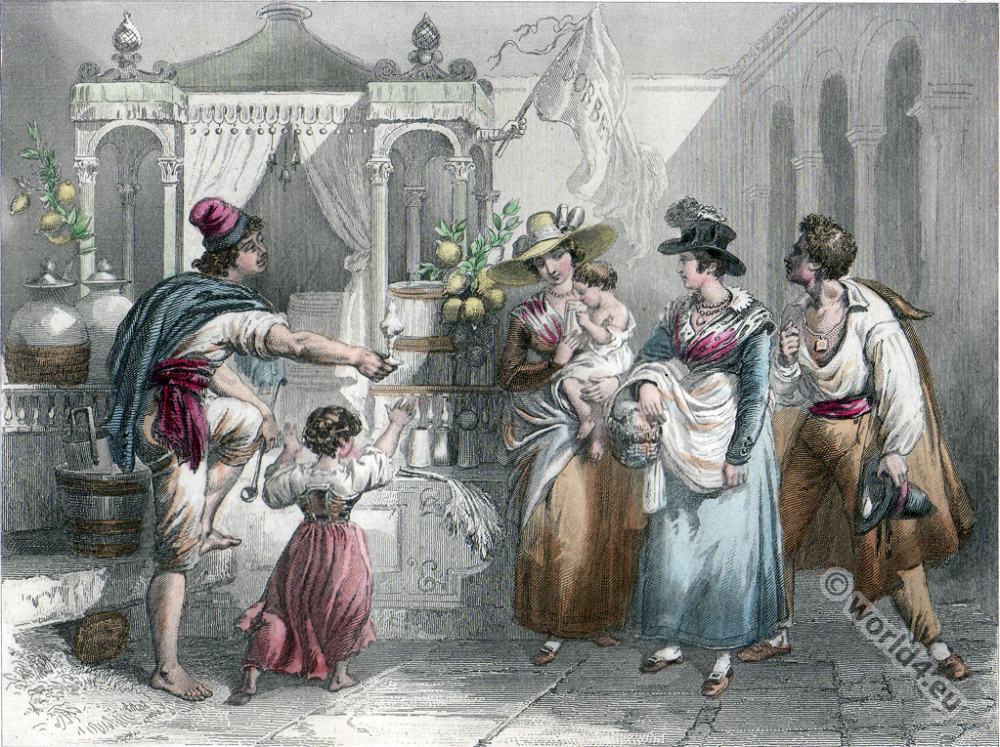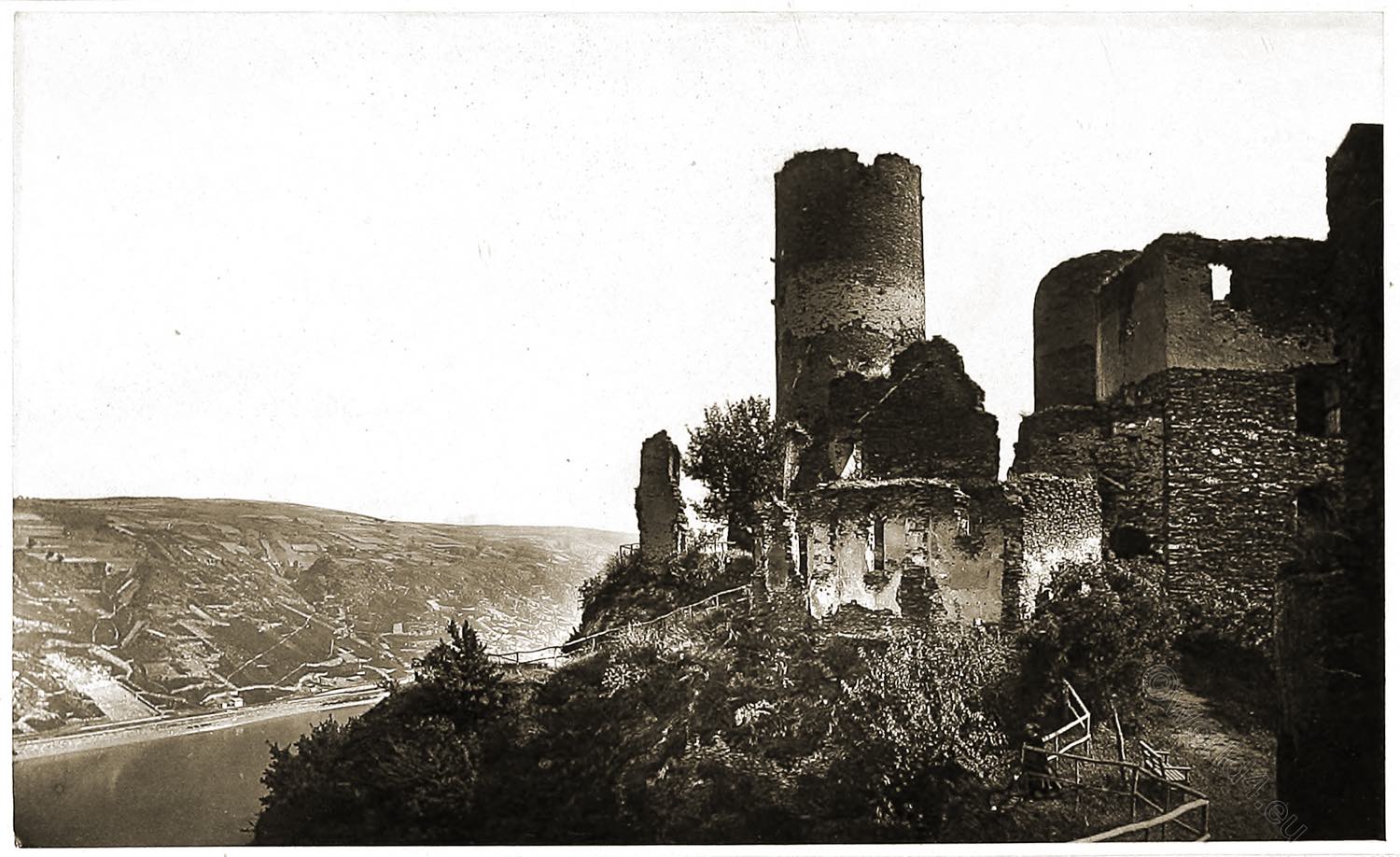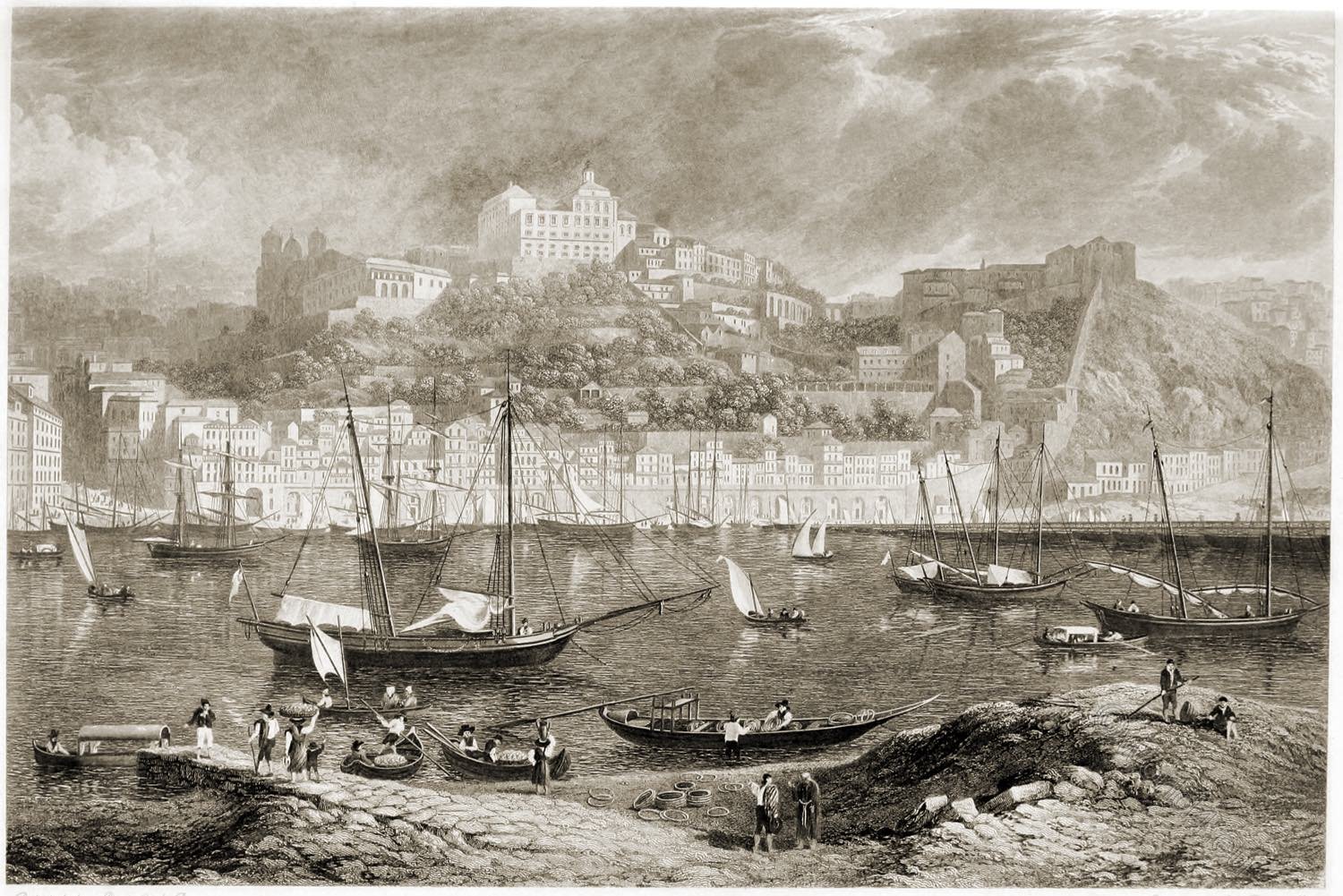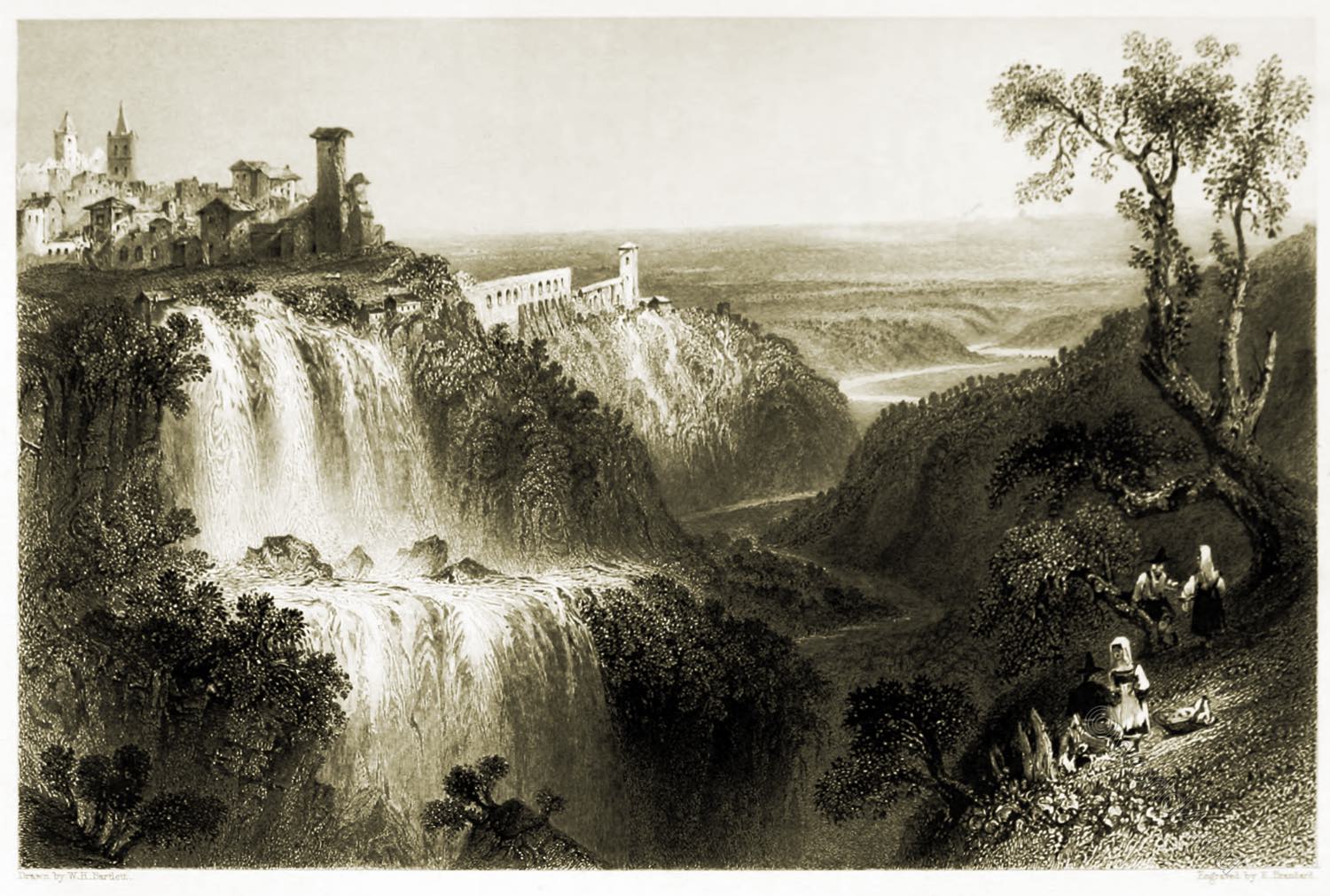
Gaius Maecenas (also Gaius Cilnius Maecenas, born on 13 April around 70 BC in Arretium, today’s Arezzo; died in 8 BC in Rome) was a confidant and political advisor to the Roman Emperor Augustus and a patron of the arts whose name became generic as mecenate “patron of the arts”. Maecenas gained lasting fame through his encouragement of young poets, who also testified to their gratitude in poems. The poet Horace exaggerated his friend’s noble lineage in an ode with the salutation atavis edite regibus (“scion of ancient royal lineage”).
THE VILLA OF MAECENAS, TIVOLI.
ITALY.
--- "Look back'
Lo! where it comes like an eternity,
As if to sweep down all things in its track,
Charming the eye with dread - a matchless cataract."
From: Childe Harold, Canto iv. Stanzas 69–72. by Lord Byron (1788–1824).
EVERY spot in the vicinity of Tivoli is consecrated to some classical recollection. Here Cicero rehearsed his orations to the sounds of the falling waters, and Horace delighted to repeat his odes; Cato Major here tilled, with his own hand, the verdant fields that have been pressed by the footsteps of Catullus and his Lesbia; Seneca meditated on the sources of human happiness amidst the groves of Tibur; and, in the fairy ground of the Villa d’Este, Tasso composed the greater portion of his “Jerusalem Delivered” La Gerusalemme liberata). Yet even these records, immortal as they are, do not constitute the only claims which Tivoli possesses to the admiration and attention of those who love literature, or are devoted to art.

Tivoli, the ancient Tibur, whose charms are celebrated by Horace, Ovid, and Catullus, is of Grecian origin,* and was, probably, of no little celebrity five hundred years before the foundation of Rome. On two occasions, Tibur conspired with Gaul to crush the growing greatness of Rome; but the fortunes of the young Colossus prevailed, and the envy of the diminutive rival was punished by her citizens being degraded to a state of entire dependence. Generous enough to acknowledge the picturesque attractions of this vicinity, the most illustrious Romans erected splendid palaces here, which they treated with marked and public favoritism.
The vast remains of Mecaens’ Villa are associated with the name of Augustus, once an honored guest within its walls: and, beneath the portico of the famous temple of Hercules (the Greek patron of Tibur) now incorporated with the cathedral of St. Lawrence, a crypt is shown, wherein the great monarch familiarly rendered justice. After Zenobia, Queen of Palmyra, had graced the triumph of Aurelian, by walking barefoot before his chariot, bound with golden chains, she was permitted to descend into the rank of Roman matrons, and, with that exquisite taste which she so well cultivated under Longinus, selected this delightful spot as the last scene of the great drama portrayed by her life, character, and exploits.
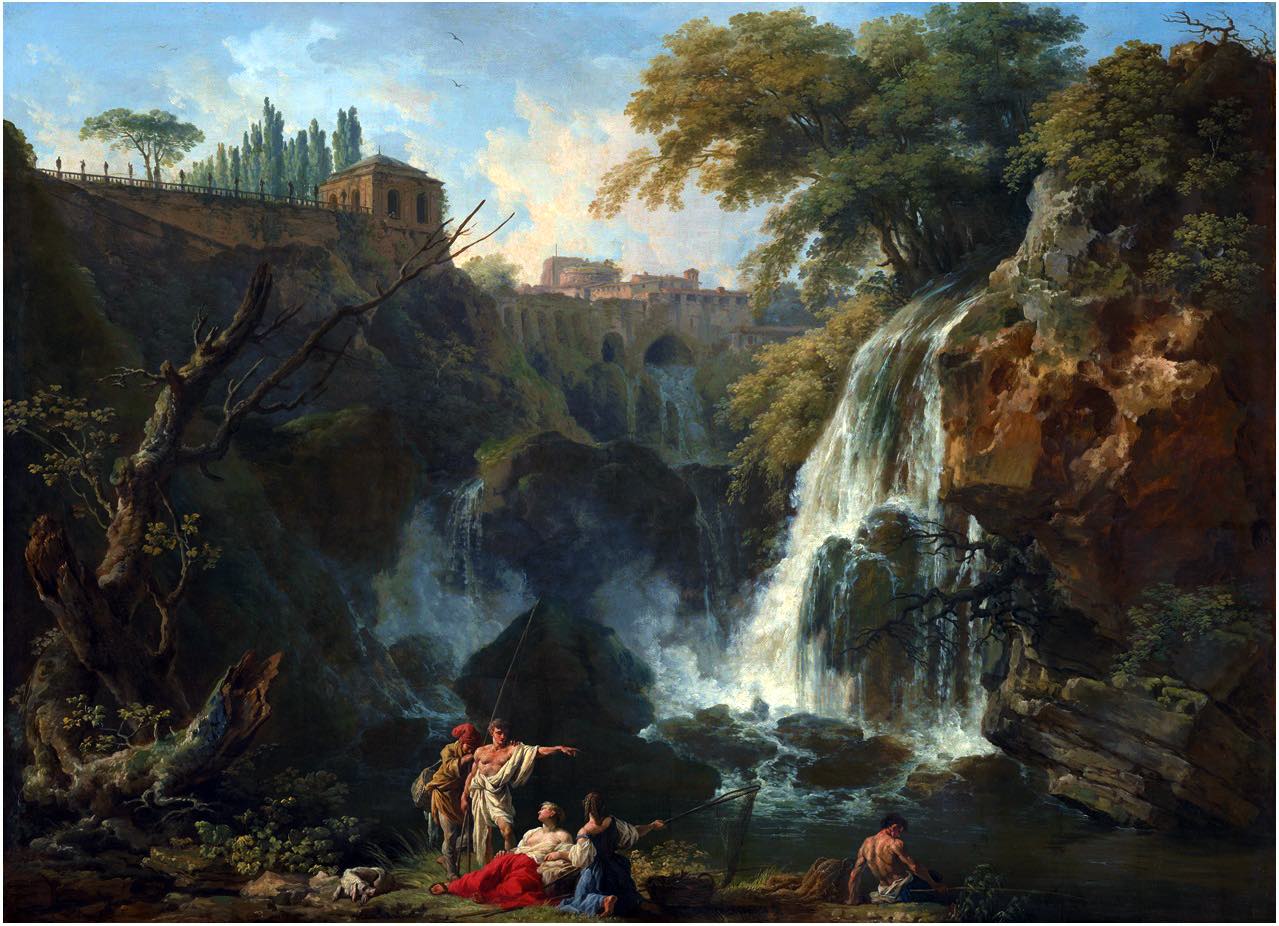
In the revolution of empires, even the Roman power decayed: and Totila, king of the Ostrogoths, wasted this beautiful portion of the imperial territories; but, in a few years afterwards, he rebuilt the town, added a castle, and placed here a strong and permanent garrison. Having laid aside its ancient name, and assumed that of Tivoli, it still retained its original predilections for republican government; and when Rienzi raised the standard of liberty, the inhabitants of Tivoli rallied round it.
Tivoli contains upwards of ten thousand inhabitants, and is adorned with many noble buildings: on one side it is sheltered by Monte Catili and the Sabine mountain-chain, that sweeps round it in a semicircular form; while the other is open, and commands a view over the Campagna, Rome, Monte Soratte, and the pyramidal hills of Rotondo, the ancient Eretum, and Monticelli.
But the living glory of Tivoli is its magnificent cascade, which, as well as the equally grand fall at Terni, is artificial The story of the latter is long and interesting; that of the origin of the cascatelle at Tivoli, is more readily explained, being formed by turning off a branch of the river Anio from its original channel, just before it reaches the highest precipice, for the purpose of supplying the town with an abundance of water.
The Anio, whose gentle windings through the vales of Sabina are invisible from the heights of Tivoli, enters the woody precincts of the town, and, stealing beneath the shelter of dense, dark, olive groves, reaches the brink of the rock, down which it falls, with a startling suddenness, into a rocky basin, from which it recoils with deafening noise, plunges violently through a huge chasm in the rock, and tumbles headlong into a dark cavern beneath. These first efforts of the agitated waters, after their decadence from the summit-level, may be witnessed with security and delight from the little bridge that bestrides the narrow, rocky bed, below the final fall.
The cascatelle, which forms the chief feature of this illustration, is not inferior in sublimity and beauty to the first fall of the waters, within the town. The torrent pours over one ledge of rocks down upon a second, and leaps, in a foaming volume, from this place of momentary rest, through thickets, shrubs, and trees, that live in endless tremulousness, while the spray, that flits away from the great central stage of the cataract, falls on the opposite banks in an eternal dew, or is lighted up with the brilliant colors of the rainbow.

“The elevation and mass of these cascades; the colours and broken masses of the rocks down which they tumble; the shrubs, plants, and brambles that hang over the channel, and sometimes bathe themselves in the current; the river, below, fretting through a narrow pass under a natural arch; the olives that shade that arch, and the vines that wave around it; the bold bendings and easy sweeps of the surrounding mountains; and the towers of the town resting on the summit of the hill beyond the cascatelle, with the ruins of Mecaenas’ Villa on its shelving side, — compose one of the most delicious pictures for softness and beauty, wildness and animation, that can be imagined, even amidst the scenery that has been the school of painters.”
*) Tibur Argraeo positum colono.
Source: The Rhine, Italy, and Greece in a series of drawings from nature by George Newenham (1790?-1877). London: Fisher 1841.
Related
Discover more from World4 Costume Culture History
Subscribe to get the latest posts sent to your email.


